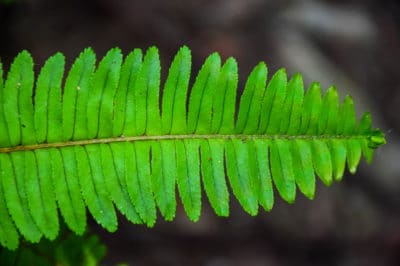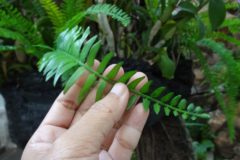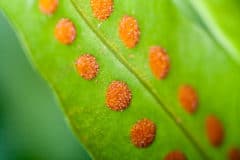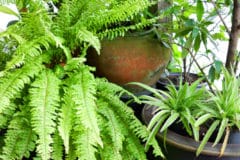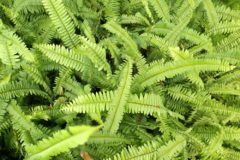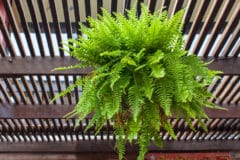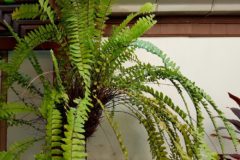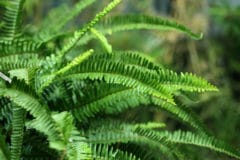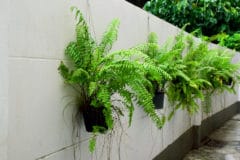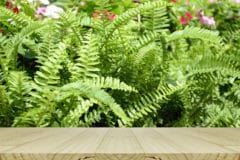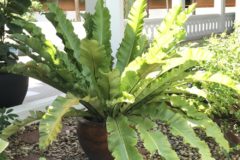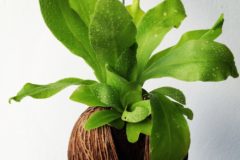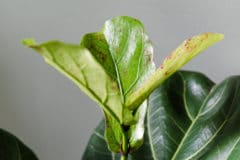Light Levels
In the wild, Boston ferns are understory plants. That means they get plenty of light, but it’s indirect. In the garden, they usually grow best in dappled shade. Direct sunlight from a south-facing window means too much heat and light reaching plants grown indoors. Boston ferns in this situation will typically develop brownish leaf tips because they are literally burning.
Pet Damage
Cats and dogs – especially young animals – often nibble on houseplants. Luckily, Boston fern isn’t toxic to them, but their chewing can damage leaves and fronds. The chewed edges will turn brown or otherwise become discolored. If this is the problem, you’ll be able to see the chewed leaves, often with puncture holes from the animal’s teeth.
Water Issues
Boston ferns need consistent water. Too much means soggy soil, and – eventually – the roots will rot. In some cases, it’s not the amount you’re putting on the plant, but poorly draining soil or pots causing the problem. Too little water means the plant won’t grow properly and is more susceptible to disease and insect attacks. In either case, the leaves may begin to turn brown or drop off.
Fertilizer Problems
A Boston fern doesn’t need a lot of fertilizer and leaves may brown if they get too much or salts build up. To fertilize:
- Use a balanced liquid organic fertilizer or slow-release forms.
- Dilute liquid fertilizer half and half with water.
- The NPK ratio should be 10-10-10 or 20-20-20.
- Fertilize only during the growing season – early spring to late summer.
Preventing Problems
Providing Boston ferns with the right environment and care will go a long way toward preventing brown leaves. Give it bright, indirect light indoors and plant in dappled shade outdoors. Fertilize regularly but lightly. Leach container-grown plants several times a year with distilled water. Water well but don’t leave soggy soil. Make sure there’s adequate humidity for indoor plants.
If All Else Fails
You can’t win them all. If you’ve tried everything else, cut back everything except the brand new fronds. You might also try repotting. Mix your own potting soil with four parts peat moss, one part horticultural bark and five parts perlite. If that’s still not successful, start new plants from the offsets dangling on rhizomes from the mother plant. Or just buy another plant.
